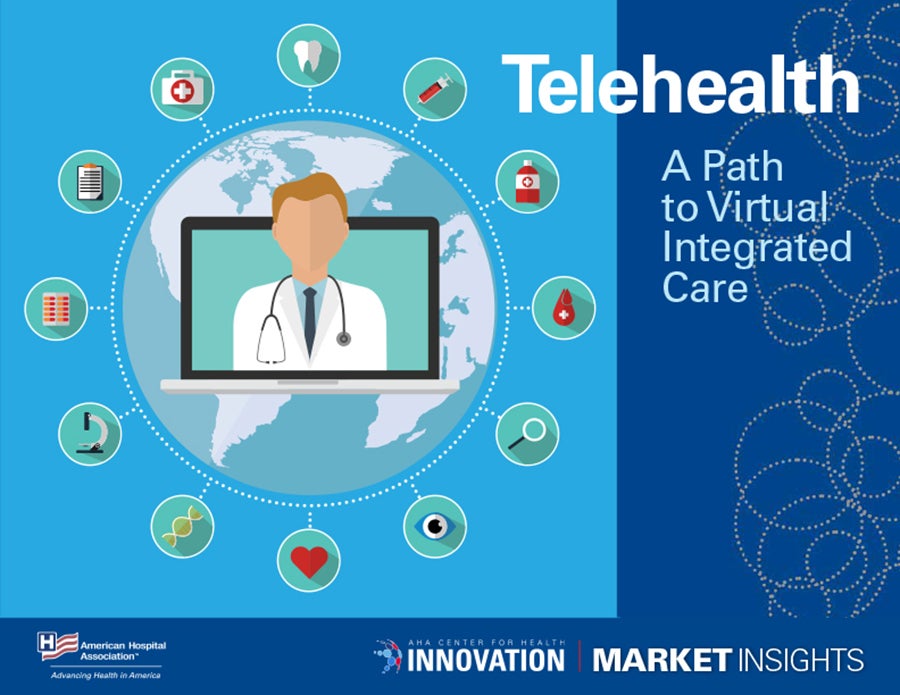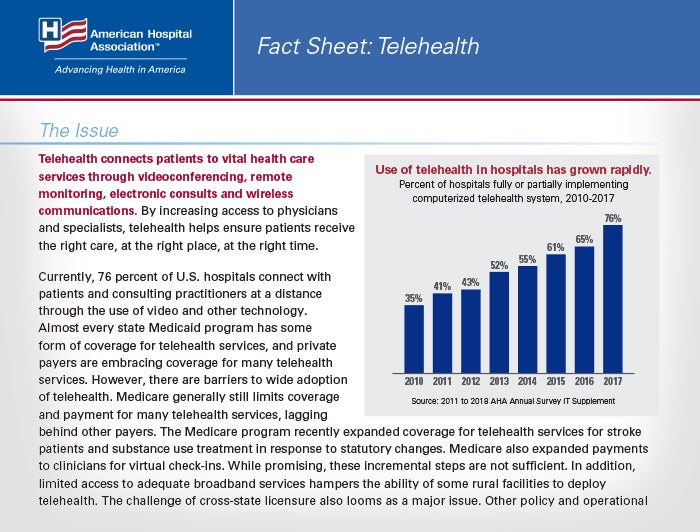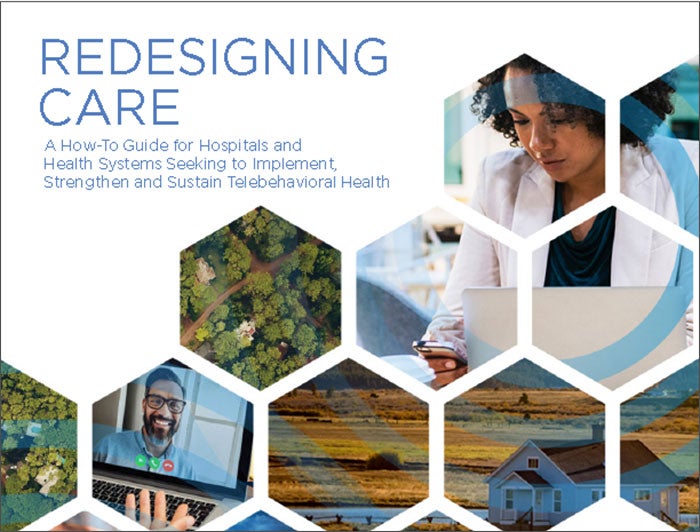
Market Insights: Telehealth Strategy
Patients are increasingly making decisions about who delivers their care and engaging in the delivery of that care digitally. Hospitals and health systems that are working now to increase the maturity of their telehealth capabilities will be well-positioned to meet patient demands for digital tools that allow them to conveniently engage in care. Hospitals that don't address these expectations increasingly will be challenged by new market entrants and other disruptors that seek to attract new health care consumers and encroach on existing patient-provider relationships.
Using Technology to Address the Behavioral Health Crisis
Behavioral health disorders affect 44 million adults in America. Yet fewer than half of this growing population receive the treatment they need. Telebehavioral health offers tremendous potential to improve patient outcomes by transforming care delivery, overcoming geographic distances and enhancing access to care, particularly in underserved and rural areas or both.
The AHA and the National Quality Forum have collaborated to produce Redesigning Care: A How-to Guide for Hospitals and Health Systems Seeking to Implement, Strengthen and Sustain Telebehavioral Health, which describes actionable strategies and interventions and links to a variety of other tools and resources. Whether a health care organization is starting a telebehavioral health program or strengthening an existing one, using this guide can provide better care to a large number of people who need behavioral health services, but don’t have access.

Telehealth: A Path to Virtual Integrated Care
Telehealth is part of a larger digital transformation in health care. The electronic health record, omnipresent mobile devices and faster internet connections have provided new ways for patients and providers to interact. As a result, hospitals and health systems need a strategy for their own digital transformation.
This report from the AHA Center for Health Innovation examines how telehealth is part of a digital health revolution; the flexibility of delivery platforms and how they fit into virtual integrated care; why telehealth is critical to health care transformation; challenges to telehealth expansion; the current state of telehealth and opportunities for growth in hospitals; technology options and choosing the right vendor; and, most importantly, how hospitals and health systems can build capacity to expand access, improve outcomes and reduce costs.
Interactive Map: U.S. Telehealth Adoption
EXPLORE THE MAP AND VIEW DATA ON THE DRAMATIC GROWTH IN TELEHEALTH
Find out what percentage of community hospitals in each state are using telehealth to provide either provider-to-provider or provider-to-patient consultation and visits.
EXCLUSIVE: View a more in-depth, AHA MEMBERS ONLY version for advanced querying capabilities.
FOR MORE DATA: View hospital data on telehealth and many other areas, visit AHA Data.
Source: 2017 AHA Annual Survey Database™ and based on U.S. community hospitals as defined in Hospital Statistics.
Resources
Thought Leadership

Digital Transformation: Anywhere Care
Health care is moving toward a participatory health ecosystem, one that puts consumers at the center of their own care journey. This report offers insights on how to avoid being on the wrong side of this emerging and disruptive trend. Providers will need an appetite for ambitious transformation and the will to tackle hard choices around the legacy organization.
TELEHEALTH ASSESSMENT

25 Questions for Leadership Teams
Successful hospital and health system telehealth programs don't happen by accident. As hospital and health system executives start, grow and optimize their organizations' telehealth programs, they need to answer these 25 questions to reach their clinical and financial objectives.
Telehealth Presentation

Highlights of Telehealth Report
This PowerPoint presentation focuses on the role of telehealth in digital transformation. Several slides describe the Hospital Telehealth Maturity Model, with model indicators, opportunities and steps to consider specified for community hospitals, health systems, academic medical centers, urban and rural hospitals, and critical access hospitals.
Telehealth Tech Market

Guide to the Telehealth Tech Market
The types of telehealth technologies are as varied as the patients that the technologies are designed to help. That can make picking the right technology difficult. Find out the best practices for vetting telehealth vendors and their technologies and what red flags to watch out for.
AHA Telehealth Research

Telehealth Fact Sheet
In 2019, the Centers for Medicare & Medicaid Services expanded Medicare coverage for virtual services and the agency provides waivers in some alternative payment models, but more fundamental change is needed to expand payment to all geographic areas and all services that are safe to provide via telehealth.
CASE STUDIES

Right Care, Right Place, Right Time
See how hospitals and health systems use community and patient need as the starting points for new telehealth services. These examples illustrate the ingenuity of providers that have created measurable improvements in patient outcomes and savings for the health care system.
Data
97%
Patients satisfied with their first telehealth experience and would recommend the program
Harvard Business Review

67%
Percentage of health system CEOs who said integration with clinical workflow is the most important factor when selecting a telehealth technology system from a vendor
Center for Connected Medicine; The Health Management Academy

63%
Percentage of patients who reported "no difference" in the "overall quality of the visit" between a virtual and office visit with a physician
American Journal of Managed Care

$1.41 Billion
2018 venture capital investment in on-demand health care services, including telemedicine
Rock Health

$2,750
Health care providers saved almost $2,750 per patient when using telehealth instead of in-person physical therapy when discharged after knee-replacement surgery
Veritas study, conducted by the Duke Clinical Research Group
80%
Emergency virtual visits wind up "resolving the episode of care" without a trip to the emergency department (ED) or another site of care.
Jefferson Health




